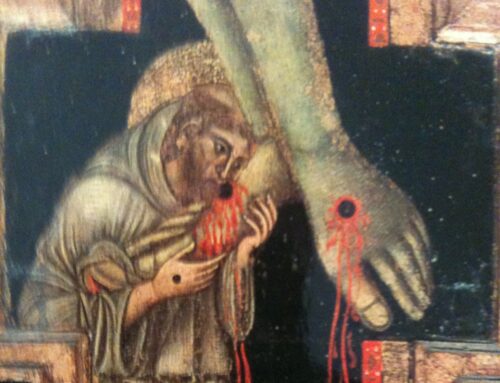(This article originally appeared in the TAU-USA Fall Issue #104)
Fr. Chris Shorrock, OFM Conv., CNSA

Fr. Chris Shorrock, OFM Conv.
During the months of September and October, we celebrate a number of significant Marian feast days – the Nativity of the Blessed Virgin Mary (8 September), Our Lady of Sorrows (15 September), Our Lady of the Rosary (7 October).
It should be self-evident that the Franciscan Order, with its tradition of devotion to the Blessed Mother of God, certainly received its love for Mary from Francis of Assisi.
This becomes more evident as scholars continually uncover, or establish with more certainty, texts relating to Francis and thus confirm that the “Poor man of Assisi” (the poverello) was not only the “herald of the great King” but also the faithful “Knight of the great Queen.”
Of course, we have to avoid the risk of unduly applying to Francis of Assisi everything that later generations would have liked to admire in him. For this reason, we will rely on Francis’ own writings and those of the earliest biographers such as Thomas of Celano, who wrote his first biography at the insistence of Pope Gregory IX for the canonization of Francis in 1228/29 and his “second life” in 1247.
There is also the tendency to view Francis’ devotion to Mary as somewhat of an isolated entity, unrelated to his spiritual life as a whole. Yet, Francis’ love for Mary was so much a part of him that it is almost impossible to separate his Marian devotion from his daily life.
I am sure we are all aware that Francis was not a theologian, particularly as we understand the term today, and therefore we should not expect to find in his writings a clearly-defined Marian doctrine.
Francis was a man of his time, and “with his childlike faith he absorbed the Church’s teaching on the Mother of God and nourished his Marian spirituality on it.”1 For Francis, prayer and meditation introduced him ever more deeply to the heart of the Marian mysteries and gave him a greater understanding of her pre-eminent role in God’s plan of salvation. His words and writings show us the fruit of his prayer in a way so personal, so original, and so unique that they can still move us today, eight centuries later. Franciscans of every time have valued the words of Bernardine de Bustis (d. about 1515), which offer some insight into this aspect of the Franciscan tradition:
The seraphic father himself admonished his brethren that they should attribute to the blessed Mother of God every privilege which may be appropriate to her excellence, and that they should exalt her with all the praise that is appropriate for such a pure human creature.2
Let us then turn to some rather general remarks about Francis and his love and devotion to Mary. Francis endeavored to follow Christ as closely as possible by surrendering his life into the hands of his loving Father and therefore could not help loving in a special way the pure and most holy Virgin who was chosen by the Father to be the mother of his divine Son. Francis clearly perceived and presented Mary as the model of every Christian who responds to the presence of God in their lives.
According to St. Bonaventure (d. 1274), one of Francis’ early biographers, Francis placed himself and his order under the protection and guidance of Mary for all time.
On one side we should show Mary in all her poverty of Bethlehem placing the most sweet son of God upon the rough straw of the manger. In the other half of our painting, we would portray Mary, the Immaculate Mother of God, and Queen of the Seraphic Order, in the chapel of Mary of the Angels stretching forth her arms in motherly protection over all her Franciscan sons and daughters.3
From his earliest days, according to the biographer Thomas of Celano, Francis “burned with devotion toward the mother of all good.” When Francis abandoned the world, he placed himself under the loving care and protection of his heavenly Mother. He asked her to be his guide and advocate in his new life of poverty after the pattern of her Son. Thomas of Celano tells us:
He embraced the Mother of Jesus with inexpressible love, since she made the Lord of Majesty a brother to us. He honoured her with his own Praises, poured out prayers to her, and offered her his love in a way that no human tongue can express. But what gives us greatest joy is that he appointed her the Advocate of the Order and placed under her wings the sons he left behind, that she might protect and cherish them to the end.4 Recalling the words of Thomas of Celano, “he embraced the Mother of Jesus with an inexpressible love, since she made the Lord of Majesty a brother to us,” Bonaventure adds “and, through her, we have obtained mercy.”5
In these simple words of the early biographers, we see the deepest foundation for the reverence Francis showed toward Mary. For him, the Incarnation was the basis of his whole spiritual life, and he would go out of his way to follow in every way the example of the word made flesh. Therefore, it would seem only natural that he “owed” a special love to this unique woman, who brought God within our reach and “made the Lord of Majesty a brother to us.”



Leave A Comment